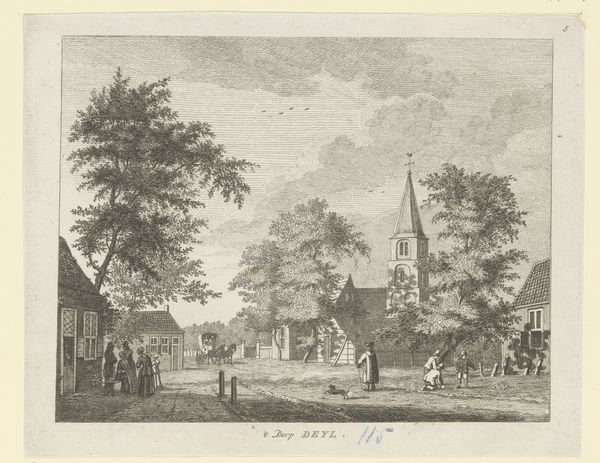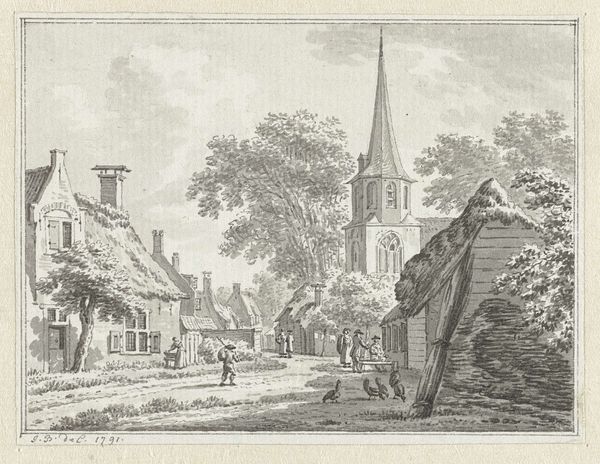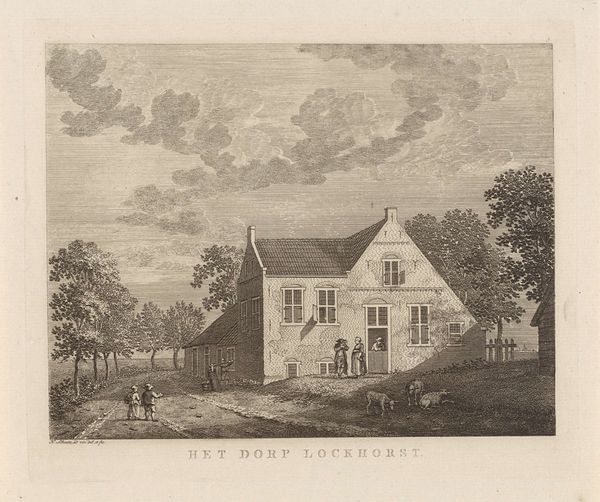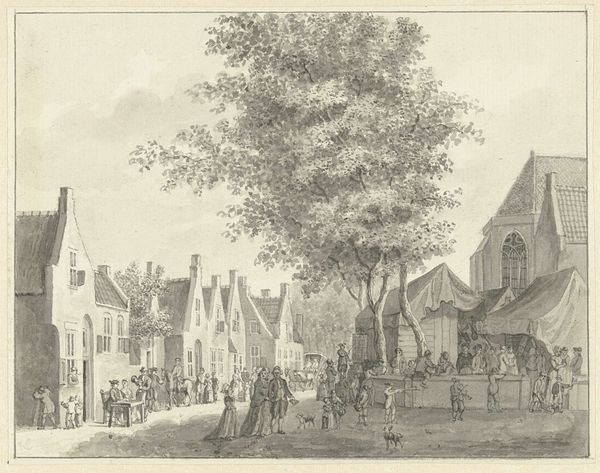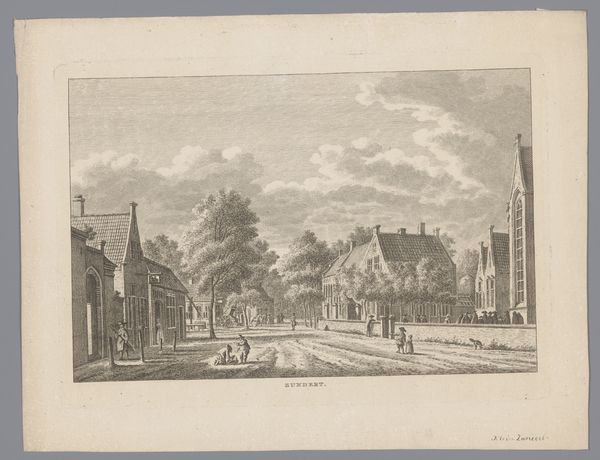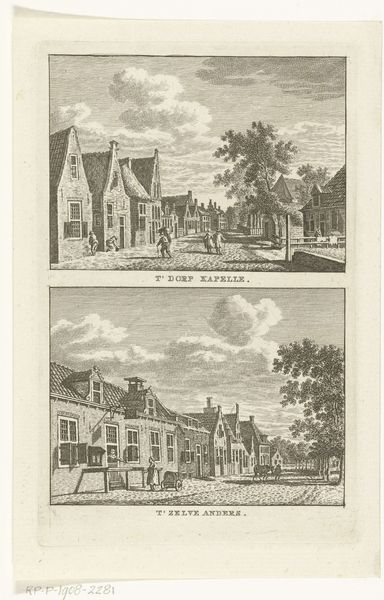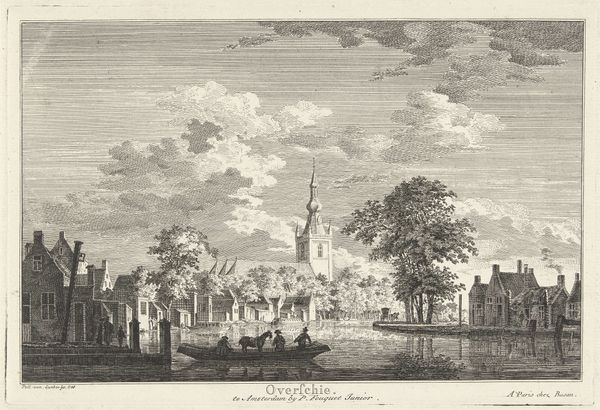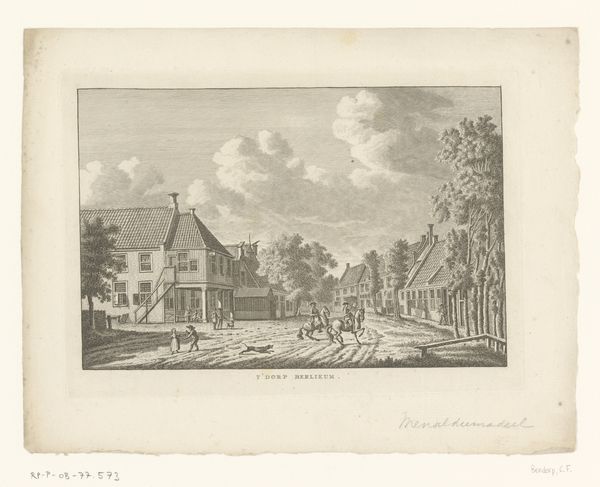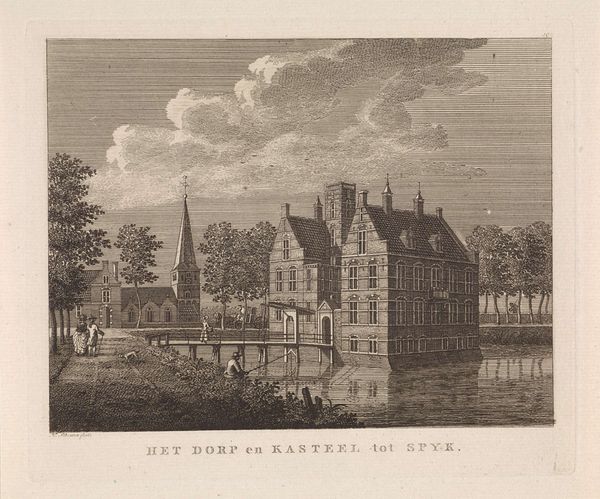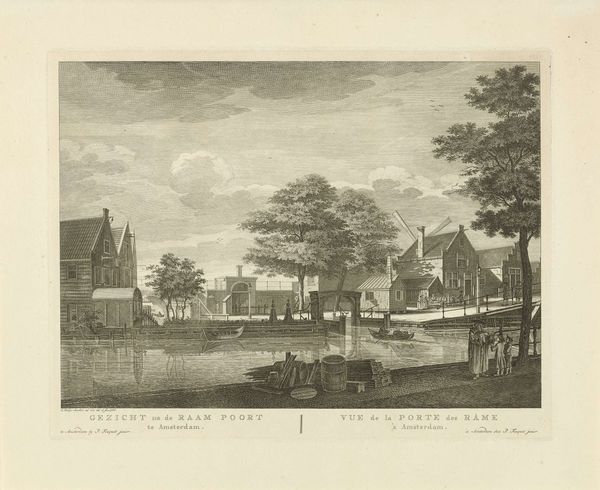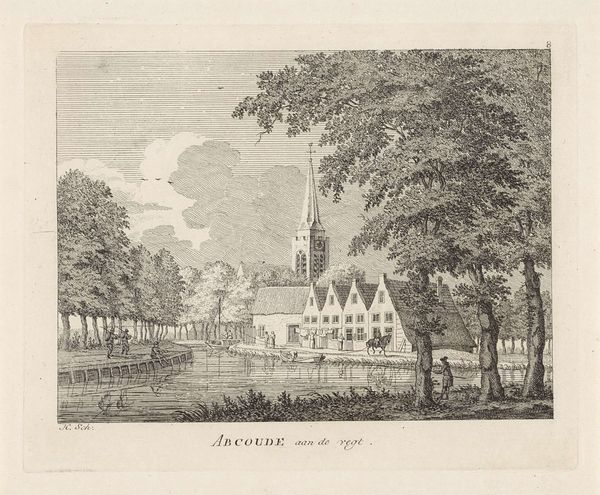
print, engraving
#
dutch-golden-age
# print
#
old engraving style
#
landscape
#
cityscape
#
genre-painting
#
engraving
#
realism
Dimensions: height 168 mm, width 201 mm
Copyright: Rijks Museum: Open Domain
Curator: Today, we’re examining "Gezicht op Doorn," a cityscape engraving by Hermanus Petrus Schouten, dating from between 1762 and 1822. The work is held here at the Rijksmuseum. Editor: Instantly, I'm drawn to the texture—the cobblestones underfoot seem almost palpable, and the shading creates such a quiet, sleepy atmosphere. Like stepping back in time into a monochrome dream. Curator: Precisely. Schouten meticulously employs linear hatching to delineate form and texture. Note the varying density of lines which modulates the tonal range, evoking light and shadow. It's a showcase of realist technique within the conventions of Dutch Golden Age printmaking. Editor: And the steeple—such a dominant, vertical presence. It's the fulcrum balancing the domestic scale of daily life below, and yet somehow, those people in the foreground feel completely disconnected, like actors on a stage set, while the tree filters the strong horizontal. Curator: Indeed. The strategic placement of the church is a deliberate compositional choice. Observe the lines drawing the viewer’s eye upward, thereby injecting a sense of grandeur into the otherwise quotidian scene, that serves to juxtapose themes of permanence and transience within this micro-society. Editor: There's also something wonderfully banal, dare I say almost darkly funny, about the almost complete lack of drama here. Just people going about their day, blissfully unaware they’re going to become picturesque artefacts one day. A simple moment framed for posterity, as if by a benevolent watcher! Curator: The lack of idealization, as you suggest, further cements the engraving’s affiliation with Realism. It refrains from embellishing the scene with grandiose or overtly sentimental elements, opting instead for what we might understand as an objective representation of everyday life. Editor: It is strangely powerful and evocative of life in that era. There's a strange sense of yearning evoked in this seemingly objective rendering! Thank you for guiding me through it. Curator: It was my pleasure. The layered artifice of the engraving truly invites diverse interpretations!
Comments
No comments
Be the first to comment and join the conversation on the ultimate creative platform.
